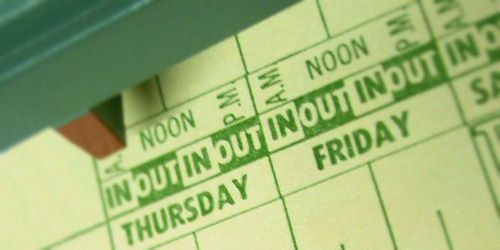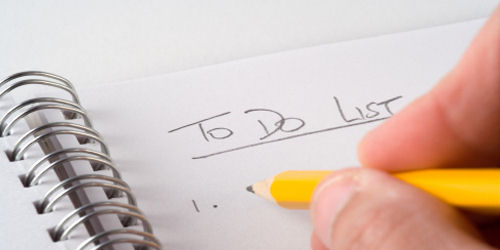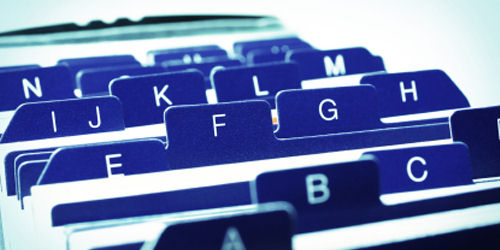6 Simple Ways To Increase Your Productivity As A Freelancer
The best part about being a freelancer is having the freedom to set your own schedule and make your own rules. This, however, can also be the worst part. Without the normal structure of an office environment, many would-be freelancers find themselves wondering at the end of the day where all their time went. Getting the most out of your workday can be tough. So, to help, we present some simple ways that freelancers can increase their productivity.
Further Reading on SmashingMag:
- The Roadmap To Becoming A Professional Freelance Web Designer
- 15 Habits Of Professional Freelancers
- Productivity Tips For Running A Web Design Business
- Getting More Work Done Without Simply Working More Hours
1. Set A Schedule
Define Your Working Hours
Having set working hours creates a feeling of accountability and puts a premium on your time, making you less likely to waste it. Create a clear set workday schedule and stick to it. If you decide to start work at 8:00 each morning, then get up, take a shower, get dressed and get to work on time. Wandering into your home office still in your pajamas doesn’t exactly set the mood for a productive day. Follow this rule and you may be surprised to find your level of productivity increase immediately.

Take Breaks
Studies show that people who take short breaks during the work day tend to get more done . Spending a few minutes away from work will have you returning refreshed and ready to tackle the next task. Go for a walk, grab a snack or take a quick ride to the coffee shop. Set aside 30 minutes or an hour each day at a predetermined time to take lunch. Skipping lunch may mean more time to work, but working on an empty stomach leads to poor concentration. Your focus here should be on quality rather than quantity. Thirty minutes of focused work is much more productive than an hour of distracted work.
2. Make A Plan

Set Goals
Without goals, we would quickly find ourselves bumbling through life aimlessly. Goals keep us on track with a clear vision. Set short-term, mid-term and long-term goals for yourself. For instance, what do you hope to accomplish this week, this month or even this year? Long-term goals help shape your short-term goals. Spend some time thinking about what you want to accomplish and then write it down.
Create To-Do Lists
Use your goal list for the week to create your daily to-do lists. You can use any type of to-do list, whether a desktop app, an online app or just plain old pencil and paper. Regardless of the format you prefer, having your day planned out in order to stay focused is important. Create the next day’s to-do list at the end of each day and commit to it.
Break Up Large Tasks Into Managable Pieces
When creating your to-do lists, don’t write things like, “Work on productivity article” or “Work on logo design.” Be more specific, like, “Do research for productivity article” or “Refine logo concepts.” By being specific, you narrow your focus and work more efficiently. Save the vaguer or more general descriptions for your goals list.
Track Your Time
Several good time-tracking apps out there will help you with time management. Knowing if you’re using your time wisely is important. Record how long you take to complete tasks: you may be surprised to find how much time you waste in a day. Knowing how long certain tasks take can help you better plan your days, leading to greater efficiency.
Evaluate Your Performance
At the end of the day, look back at how well you measured up to the goals you set for yourself. Did you accomplish what you set out to do today? If not, why? Evaluating your performance is a critical step towards improving your productivity. Set realistic but challenging goals, and honestly review your performance to determine if there’s room for improvement.
3. Get Focused

Do One Task at a Time
Multi-tasking has gone from being a computer term to a part of our everyday lexicon. Many people feel these days that we get more done by multi-tasking. This couldn’t be further from the truth. In fact, doing one task with full attention is much better than doing two tasks with half as much attention. Spreading your focus between multiple tasks leads only to diminished quality and actually less productivity. Do just one thing at a time and you’ll find your productivity go up, along with the quality of your work.
Limit the Time You Spend Surfing the Web
Set aside a certain amount of time each day for Web surfing, and keep it work-related. Use an RSS (Really Simple Syndication) reader to have new content from your favorite websites and blogs brought to you. This is much more efficient than visiting these websites several times a day to see if anything new has been published. If you already use an RSS reader, then you could probably benefit from spending a little time cleaning it up and eliminating feeds that you rarely read. Also, organize your feeds into folders so that you’re not browsing non-work-related feeds during the day.
Eliminate Distractions
Allocate certain times of the day to checking email and social media. Rather than keeping your email and Twitter accounts open on your desktop and letting them constantly vie for your attention, decide how much time you are willing to devote to them. For example, you may decide to check and respond to emails twice a day. Handling tasks like these in large batches is best. Which do you think would take longer: reading and responding to 30 emails periodically throughout the day, or reading and responding to them all in one shot?
4. Get Organized

Consolidate Your Email
Many of us have several email accounts for different purposes. Why not put all of your email in one place? If you don’t already have one, sign up for a Gmail account from Google. It’s free and by far the best Web-based email out there. Once you have set up your Gmail account, you can have it fetch email from all of your other addresses. You can even set up filters to organize emails as they come in so that you don’t get confused. Now you can deal with all of your email in one convenient place.
Use Labels to Organize Your Email
Gmail has labels instead of folders. Labels work like folders except that an email can have multiple labels instead of having to reside in just one folder. Set up labels (or folders if you don’t use Gmail) with names like “Urgent” and “Follow up” to prioritize messages, and names like “Account info” and “Website client” to stay organized. With Gmail, you can even automatically label and sort incoming email instead of doing it manually.
Update All Your Social Media Accounts at Once
Networking is a great way for freelancers to find new clients, keep up with trends in their industry and stay connected to colleagues. Most of us have accounts on several social media websites, such as Twitter, Facebook and Flickr. Just keeping track of all these services can be challenging, not to mention a huge time drain. Instead of visiting each of these websites individually, why not update them all in one place? With social media aggregators, you can stay in touch as well as post updates to all of your social media accounts at one time, in one place.
5. Set Up Your Office Properly

Respect Your Office
Keep your office clean and orderly. Have only the essentials on your desktop: computer, phone, printer, etc. A cluttered desk negatively affects your mood, which will spill into your work. Working in a constant mess is counter-productive. Take the time to set things up so that everything you need is right in front of you. Searching for supplies, walking to the printer and other small actions can really add up to a lot of wasted time.
Get Comfortable
Make your work place comfortable by opening up the window on a nice day or playing some of your favorite music. Your place of work shouldn’t be a dark dudgeon where you feel like you slave away all day. You should enjoy being there. Invest in an ergonomic chair, keyboard and mouse. Back pain or carpel tunnel certainly won’t make you more productive. Research ergonomics to learn how to create a comfortable and healthy office.
Go Mobile
One of the best things about being a freelancer is that you don’t have to report to a certain place every day. If you find yourself getting in a rut, change things up by working at a local coffee shop, bookstore or park. A change of scenery can go a long way to keeping things fresh, and most cities have a lot of free WiFi hotspots. Just pack your laptop and go.
6. Get Help

Outsource
Consider hiring an assistant. You will more than make up for the cost of filing and invoicing services with the extra time you’ll have to focus on the work you do best. Hand your taxes over to a professional; an accountant will do them properly and give you one less thing to worry about. All kinds of services for small-business owners are out there. Which ones make sense for you?
Learn from Other Freelancers
Frequent freelance forums and connect with your peers. A wealth of knowledge and new ideas is shared on forums every day. You could learn such things as how to better deal with clients and what is the best invoicing software. Become a member and reap the benefits of the collective experience of freelancers just like you.
Further Resources
Don’t stop here. Check out these other great resources on productivity.
- Freelance Folder A multi-author blog dedicated to helping entrepreneurs and freelancers.




 Agent Ready is the new Headless
Agent Ready is the new Headless
 SurveyJS: White-Label Survey Solution for Your JS App
SurveyJS: White-Label Survey Solution for Your JS App

